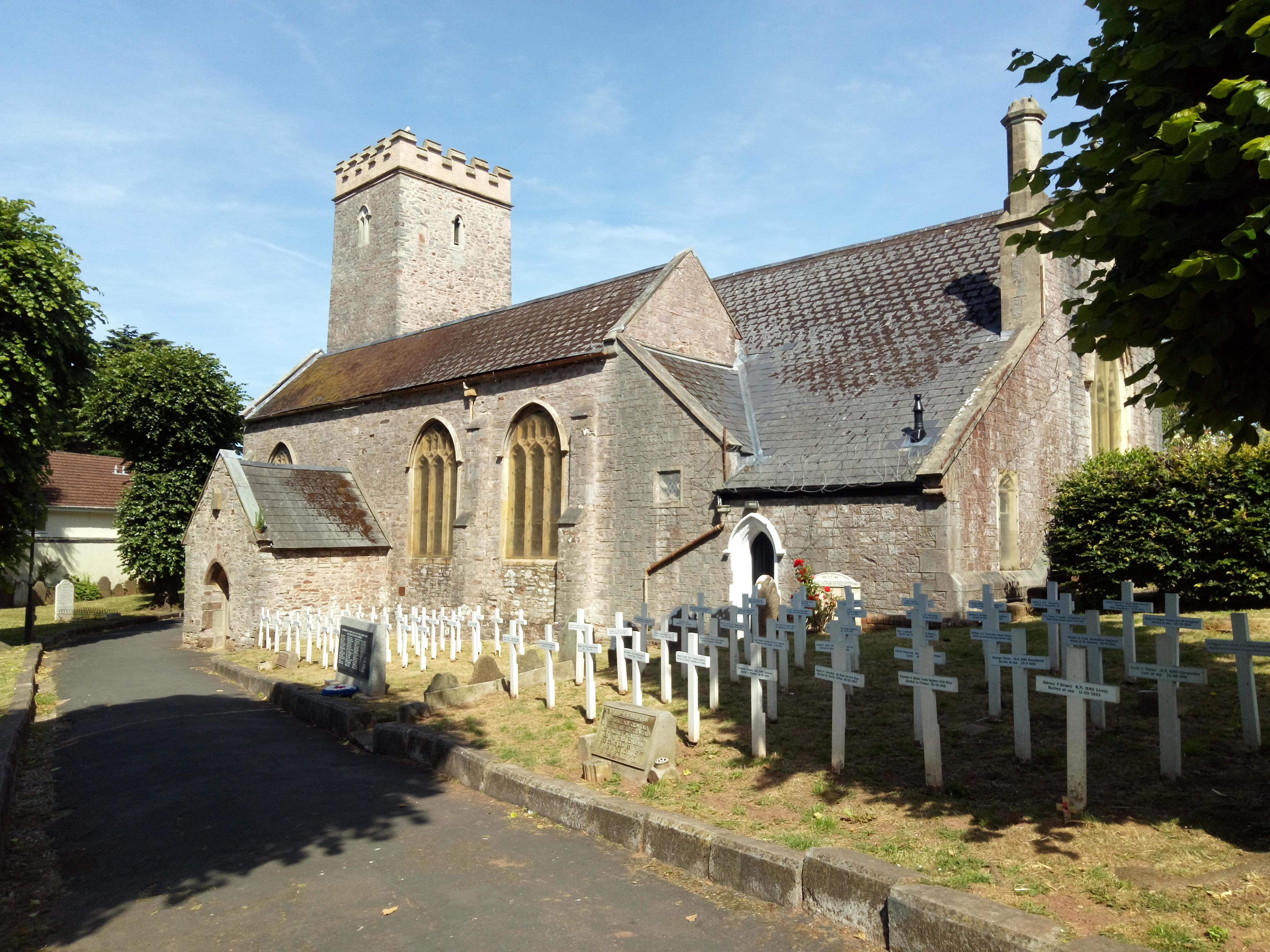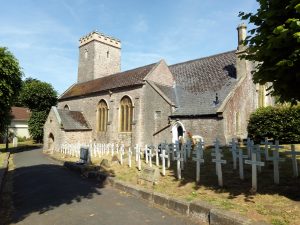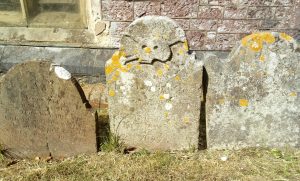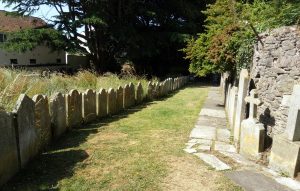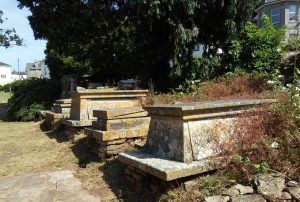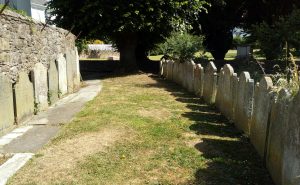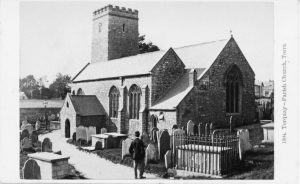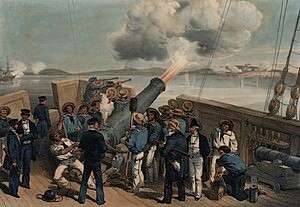By Margaret Forbes-Hamilton & Kevin Dixon
Just off Torquay’s Lucius Street stands the Greek Orthodox Church of St. Andrew.
The church is on the site of one of the oldest settlements of what would become Torquay. It’s believed that the founding of the church, which was to be named St. Saviours, was in the sixth century and may have been on an even older site – it was dedicated to St. Petrox, a Celtic saint, and was located next to a spring, wells being particularly significant to pre-Christian religions. The first written account of the parish occurs in the Domesday Book in 1086, while the church we know today was built in the fourteenth century on the site of an earlier Norman chapel.
Though the church itself is an iconic building, it’s the churchyard itself that we’re interested in here. One definition of a local was someone who has at least three generations of forbears in the graveyard. Yet, St. Saviours is unusual in that many of the 690 recorded graves are for visitors to the town, and most from the nineteenth century.
Churchyards haven’t always been the way we see them now. The look of a cemetery was highly influenced by fashion, religious beliefs and the attitudes of the times. And before they were burial grounds, churchyards had many community uses we wouldn’t now associate with the serenity of the grounds of a church. In the medieval period fairs were held there and travelling merchant’s stalls could be seen. They were venues for ball games, fencing, cockfights, quoins, ninepins, target practice with the longbow, and used for dancing, plays and those drunken celebrations called Church Ales. So perhaps the current Polish lager-quaffing residents are carrying on a long tradition!
Throughout the Middle Ages it was only the very wealthy who had memorials and these were sited inside the church. The poor were simply buried in the churchyard, one on top of another. As in St Saviour’s, this raised the level of old churchyards to several feet above the ground – there are so many thousands of folk buried there.
It’s worth noting that before the twentieth century death was part of everyday life in a way it isn’t now. Mortality rates were far higher and the deceased would rest at their home until the funeral. Lack of knowledge of the causes of disease meant anyone could be struck down at any time during the nineteenth century, on average, you would be lucky to see 50 and often this only applied for the better off in rural areas. There were, of course, exceptions. We have Nicholas Mudge whose Torre gravestone is now reused as paving – he died aged 95 in 1831. Today life expectancy is a staggering 88.7 years in Cockington and Chelston, but falls to 74.6 years in Tormohun.
Prior to the Reformation in the 16th century, few headstones exist. But from the seventeenth century onwards churchyard tombstones came into more common use – the oldest grave we have is Bonaventure Cowell’s from 1639. Gravestones served as a reminder to all that death could arrive within the hour, and that all must prepare for a ‘good death’.
Standing against the church itself is a gravestone displaying a skull. These death heads aren’t to mark the graves of pirates or Knights Templers as is often claimed. They are symbols commonly used in the sixteenth to seventeenth centuries as a warning to all that we cannot avoid death and, no matter what our status is in life, we are all the same. They are Memento Mori (“Remember that you have to die”). The skull was influenced by the ossuaries or charnel houses of earlier centuries – buildings that contained many skulls and bones and used when burial space was scarce.
It’s through reading the text on St Saviour’s gravestones that we can see the preoccupations of those living at the time. These are called epitaphs and are short texts honouring a deceased person. Some epitaphs are specified by the person themselves before their death, while others were chosen by those responsible for the burial. Often epitaphs are brief records of the family, and perhaps the career, of the deceased, and can include an expression of love or respect.
Short biblical quotations were used over and over again and there were books of appropriate inscriptions. Suitable epitaphs could also be suggested by local undertaker. This is why so many epitaphs reoccur across the country.
Epitaphs changed over time. For example, in 1737Amy and John Baker’s headstone reads, “O reader be exhorted to prepare, for thou shalt also surely die”. Yet, during the seventeenth century, the Puritans gradually lost their influence on society and attitudes changed. People become less fearful of the punishments of Hell and more open to the rewards of Heaven. Imagery and epitaphs then began to soften – the skull was replaced with symbols such as cherubs, draped urns and weeping willow trees.
Indeed, in an age when killer diseases such as cholera and smallpox were prevalent the proper commemoration of the departed was always considered to be an important part of everyday life.
Victorian graves still instructed the viewer to contemplate their own mortality and to make peace with God. Jane Burgoyne, for instance, died in 1854 aged 25 and her epitaph reads: “Weep not dear husband and friends most dear, I am not dead but sleeping here, The grass is over my grave you see, Prepare for death and follow me.” And these internments also continued the long tradition of poems being written on gravestones. These gravestone epitaphs are typical of the Victorians’ fascination with death and as middle-class wealth rose, the rituals of mourning, bereavement and burial became increasingly elaborate. Black clothing, grand funeral processions, mementos of the deceased, elaborate monuments and memorials, expensive coffins and even photographs of the dead all became part of the funeral experience. The Victorians saw nothing morbid about collecting epitaphs from tombstones, and funerary writing was accepted as a branch of literature.
Most graves in the churchyard are, however, unmarked. Though the smallpox vaccination was introduced in the early 1800s, diphtheria, cholera, typhoid and many other diseases were prevalent. Dating from 1849, in the north east corner of the churchyard there’s a mass grave known as Cholera Corner used to quickly manage the burial of a large number of the victims of cholera – 66 people died from cholera and dysentery over a period of six weeks.
The Christian faith, of course, features strongly in epitaphs. The concept of heaven as a place in the sky was common in eighteenth and nineteenth century hymns and this is reflected in the gravestones. For instance, 36 year old Henry White’s 1831 memorial reads, “Kind angel watch their sleeping dust, Till Jesus comes to raise the just, That at His coming they may rise, To meet their saviour in the skies.”
Yet, while reading St Saviour’s epitaphs certainly help us understand local history, it can only give us so much information. Parish burial records were required to record the age of death in 1813 and the Death Certificate was only introduced in 1837. Epitaphs generally only record the causes of death in unusual cases. 13 year old William Hutchings, for example, “drowned whilst bathing” in 1839. Similarly, we have John Tregaskis, aged 18, “who was drowned in the bathing cove at Torquay” on August 8th 1858. Samuel and Jane Densam were also unfortunate, being “accidentally killed by a wall falling on them” in 1849.
Childbirth was a particularly dangerous time before the introduction of good ante-natal and post-natal care – a lack of contraception and social expectations leading to multiple pregnancies.
Particularly tragic are the large number of graves of children. The main causes given for such high infant mortality were: gastro enteritis; ‘atrophy’ (wasting away); tuberculosis; dysentery; diarrhoea; scarlet fever; measles; and smallpox. In 1835 Elizabeth and William Peeke had lost, “Their four infant children, Joseph, Mary, Henry and Emma each died in the first year of their age”. This brought a kind of fatalism, the idea of acceptance of death as God’s will. In 1823 Robert Dely, 3 years and 3 months, perished: “His afflicted parent’s consolation is the blessed hope of meeting him hereafter, and with that hope they humbly bow to the will of the Almighty.”
Also notable are those inhumations of the many visitors to Torquay. In our early days our town was a health resort. The sick and disabled came here to recover and perhaps to stay in our consumption hospitals – consumption was a common term for wasting away of the body, particularly from pulmonary tuberculosis (TB). Inevitably some didn’t regain their health and lie in the churchyard.
And some memorials have no burials at all. They commemorate those lost at sea or in a foreign land as part of Britain’s imperial mission.
As Torquay developed, so the existing burial ground became overcrowded – see the image above. Additions were made to the churchyard in 1836 and 1842, but this was still insufficient. A new Torquay cemetery was needed and in 1852 sixteen acres was purchased on high ground on the outskirts of town, near a place named after the Old Saxon word for ‘hidden’, Hele.
In 1895 the churchyard at Torre was closed to burials. In 1947 the St. Saviour’s gravestones were moved to the perimeter walls and the Memorial Garden was established to commemorate those who had died in the two World Wars. St. Saviour’s was declared redundant by the Church Authorities and leased by the Greek Orthodox community in 1981.
Today most people are cremated. And even if a burial takes place, memorial stones are often plain. Skulls and gothic embellishments are out of fashion and few headstones tell of the deceased’s attributes or warn us how to behave in this life. Fortunately we have the old churchyard in Torre to remind us of how our ancestors saw ‘That Other Shore’.

You can join us on our social media pages, follow us on Facebook or Twitter and keep up to date with whats going on in South Devon.
Got a news story, blog or press release that you’d like to share or want to advertise with us? Contact us


